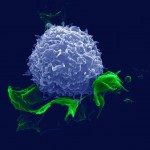Link to Pubmed [PMID] – 21095518
Gastroenterol. Clin. Biol. 2010 Sep;34 Suppl 2:S142-8
Second generation nucleos (t) idic analogues result in a complete viral suppression after 48 to 96 weeks of therapy in most patients, regardless of the virus (HBV genotype, wild type or pre-C mutant), the underlying liver disease (cirrhosis or not) or the immune status (mono- or HIV/HBV co-infection). This antiviral efficacy may result in HBe or HBs seroconversion. Its clinical impact is important since inactivation of necroinflammation allows, in the absence of liver comorbidities, a stabilisation then a reversal of fibrosis and cirrhosis, and consequently a decrease in the occurrence of carcinomatous or non-carcinomatous complications. The future issues for long-term anti-HBV therapy will be adherence on the one hand and safety on the other hand. Therapeutic failures are mainly related to poor adherence more than to viral resistance. Adherence of patients has to be optimized by therapeutic education and education of physicians. Long-term safety has to be systematically evaluated. More than the neuromuscular or metabolic side effects (lactic acidosis), the renal and bone-related adverse events have to be monitored, followed-up and anticipated by good clinical practices.

